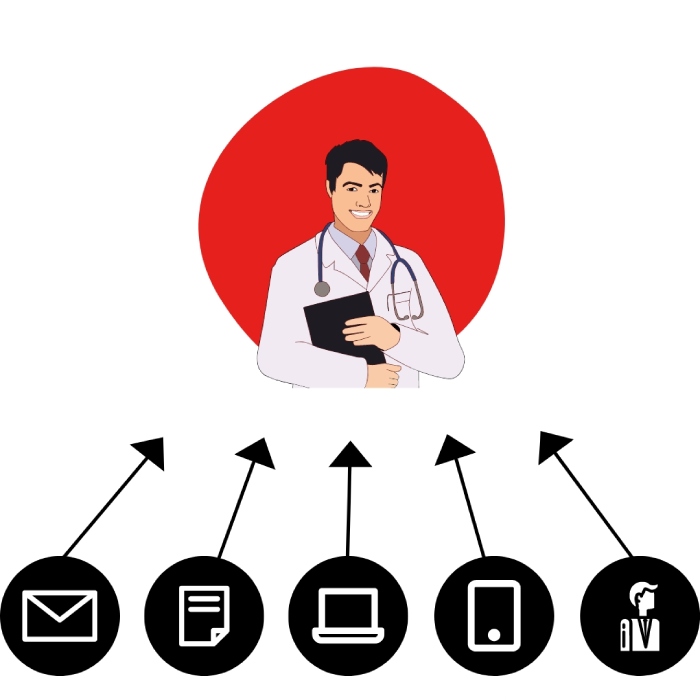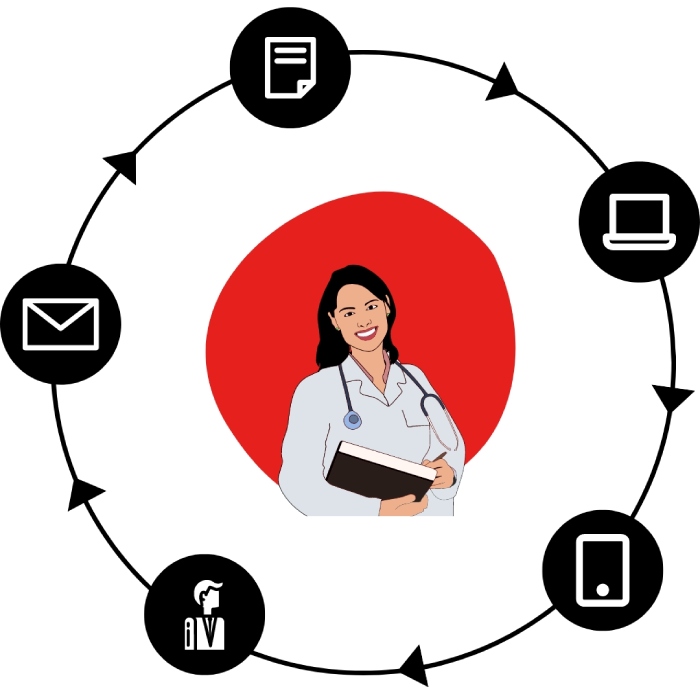Using multiple different channels to reach an audience is not a new phenomenon. We’ve all noticed the remarketing efforts of certain brands who follow us around the internet.
It’s nothing new in pharma marketing either, with most brands we work with at phamax Digital being aware that they should use a few different methods, from email marketing to sales reps.
But there’s a world of difference between simply using a few channels and expertly crafting a seamless omnichannel strategy. This difference can translate to a higher ROI too.
So, this article will take a closer look at multichannel and omnichannel, comparing the disadvantages and advantages of both.
Using Different Channels in Pharma Marketing
Using multiple channels in pharma marketing is a basic concept. Whether you are targeting HCPs or patients, the channels you might use can include:
Email marketing
Brand portal
Webinars and educational courses
Conferences and in-person events
Medical journals
One-to-one sales reps
Social media
Search ads and display ads
Print media (leafleting, magazine ads/articles, etc.)
Video ads (TV or YouTube)
It’s an obvious fact that the more channels you use, the wider your reach. Repeating your message to the same audience also increases the chance that they will remember and engage with it, right?
Of course, with a budget in mind, you may not be able to use all channels equally or at all. So, you create a strategy for how you will use the right channels to reach your audience in a budget-efficient and time-efficient manner.
And that’s really what the terms “omnichannel” and “multichannel” refer to – the strategy you utilize when marketing through these channels. Let’s start with multichannel.
Pharma multichannel Marketing

Multichannel marketing simply means that you are delivering your campaign through multiple channels
The focus is “how can we reach the audience in as many ways as possible?”
Imagine you are on a football pitch. The goal is your audience, the football is your message, and each football player is a channel. With multichannel marketing, each football player wants that ball and they are all trying to score a goal. It’s every man for himself!
Each channel is working separately to push your message toward the audience. This means that the message is usually undifferentiated between channels, and each channel is competing to get that message to the audience. You will likely have separate analytics for each channel too.
From the perspective of the audience, multichannel marketing appears as the same message being broadcast to them via social media, emails, and ads across the internet. Like seeing the same advert repeated over and over.
Pros
- Good for beginners. Multichannel marketing is a first step that allows new brands to try different channels. It’s a step up from using a single channel.
- Time and money efficient. With an undifferentiated message, you save time and money by simply repeating it on all channels.
- It works, to an extent. Repeating your message does yield some results, especially when it’s a message that utilizes storytelling.
Cons
- Could damage customer relations. Repeating the same message is going to annoy your audience. They may view your brand negatively or tune out any communications.
- Overly simplistic and untargeted. This method lacks subtlety! One customer who uses multiple channels might be bombarded, while another who only uses one channel (e.g. email marketing) will not see much at all.
- Lower returns. Compared to omnichannel marketing, we see lower returns. That means fewer clicks, purchases or calls compared to a targeted, omnichannel approach.
Pharma Omnichannel Marketing

Omnichannel marketing means integrating multiple channels together to create a seamless journey for your customers
The focus is “how can we put the customer’s needs and behavior at the center?”
Using our football metaphor, with omnichannel marketing each football player is communicating and working together. So instead of players fighting to kick the message towards the audience, they pass it around strategically to score the perfect goal.
This means that omnichannel marketing is all about creating a good experience. It is better to deliver the message once, and get it right, than shout your message repeatedly. So, each channel builds on the other. Content is customized from one channel to the next, and the release of content is coordinated. All the channels you use will deliver unified analytics too.
From the audience’s perspective, this makes the journey feel less repetitive and much more engaging. Those that actively engage receive more marketing.
For example, Dr. John might receive an email introducing a new medication. If he engages with that email (e.g. opens it), he might see a video explaining the benefits of the medication on YouTube later that day. Now that he is aware of the product and the potential benefits, he finds details regarding usage, side effects, and more when he next signs in at your portal.
The customer has been taken on a journey, where content is coordinated to match their needs at each stage.
Pros
- Seamless customer experience. Your customer is led on a journey that meets their needs. This increases satisfaction and improves your reputation as a helpful educator.
- Increased efficiency. For pharma, ads, emails etc. are only used where needed. For the customer, they can receive the info they need efficiently too.
- Improved engagement. HCPs in particular engage more with omnichannel marketing, developing long-term and trusting relationships with pharma.
- Target the right people. Omnichannel marketing creates a framework for targeting segments of your audience based on previous engagement – more time spent advertising to people who are likely to convert!
Cons
- Not a simple approach. Setting up omnichannel marketing requires a lot of planning and oversight, which is hard without an experienced pharma marketing agency.
- More upfront work. Rather than using the same content across all channels, you need to spend more time upfront creating different content that creates a journey.
Another Simple Example of Pharma Omnichannel Marketing
So, while omnichannel marketing requires more work and more expertise, the results are much more refined. At the end of each campaign, omnichannel marketing provides higher conversion rates and a higher ROI than simple multichannel marketing.
Above, we gave you an example of a completely digital omnichannel campaign. But the brilliance of omnichannel is that it can be incorporated into your existing sales team structure. For example:
- Your MSL meets with a physician to introduce your product, and their interest is recorded in your CRM.
- This triggers an automated email that invites the physician to a relevant webinar a few weeks later.
- During the webinar, further details are explored and questions are answered. Physicians that attend the webinar are noted in the CRM.
- Those physicians that signaled their interest and attended the webinar will receive a sales rep call in the following weeks to seal the deal.
In summary, omnichannel marketing really focuses on how you can make the customer experience better. As a result, you will see more HCPs, and maybe even patients, converting. Another benefit that’s often overlooked is how omnichannel impacts brand reputation – meeting the needs of your audience greatly improves how you are perceived. You become helpful rather than pushy!
